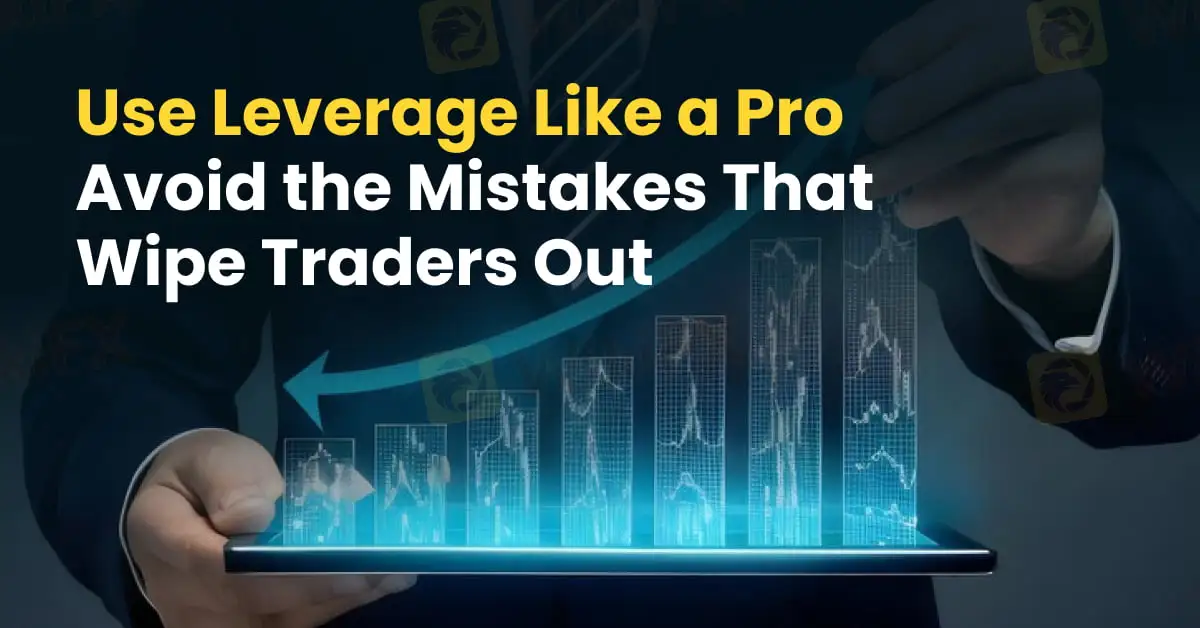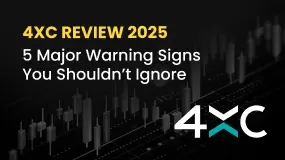简体中文
繁體中文
English
Pусский
日本語
ภาษาไทย
Tiếng Việt
Bahasa Indonesia
Español
हिन्दी
Filippiiniläinen
Français
Deutsch
Português
Türkçe
한국어
العربية
Use Leverage Like a Pro | Avoid the Mistakes That Wipe Traders Out
Abstract:In the high-stakes world of financial trading, leverage is a potent instrument that enables traders to punch well above their financial weight. By allowing market participants to control larger positions with a relatively small outlay of capital, leverage opens the door to potentially outsized returns. But it is not without peril as amplified gains also come with amplified losses, and understanding how leverage works is crucial for anyone stepping into leveraged markets.

In the high-stakes world of financial trading, leverage is a potent instrument that enables traders to punch well above their financial weight. By allowing market participants to control larger positions with a relatively small outlay of capital, leverage opens the door to potentially outsized returns. But it is not without peril as amplified gains also come with amplified losses, and understanding how leverage works is crucial for anyone stepping into leveraged markets.

At its core, leverage refers to borrowing funds, typically from a broker, to increase the size of a trading position. It's commonly expressed as a ratio, such as 10:1, which means for every $1 of personal capital, the trader controls $10 in the market. This ability to command larger sums with minimal upfront investment enhances capital efficiency but simultaneously increases financial exposure.
Leverage finds broad application across asset classes. In the forex market, its not unusual to see leverage ratios as high as 50:1, particularly in jurisdictions with looser regulatory environments. This allows a trader with $1,000 to control $50,000 in currency exposure. In contrast, shares CFDs might offer 2:1 leverage, while commodity contracts, like crude oil or gold, also frequently involve high leverage levels.

Used wisely, leverage can be a powerful ally. A modest price move in a leveraged position can result in substantial profit. For instance, a 1% gain in an asset value translates into a 10% gain on capital at a 10:1 leverage ratio. This is particularly appealing to short-term traders seeking quick returns on limited capital.
However, the same mechanics apply in reverse. That same 1% move against the trader can equate to a 10% capital loss. Add in market volatility, and losses can quickly spiral. If the value of the position falls too far, brokers may issue margin calls, which are demands for additional funds to keep the position open or close the trade altogether, locking in losses.
Mitigating these risks demands a disciplined approach. Sound risk management strategies are vital, such as using stop-loss orders, diversifying across asset classes, and actively monitoring positions. Traders must also educate themselves on how leverage interacts with market conditions and price swings.
Its equally important to understand that leverage limits and margin requirements vary depending on jurisdiction. Regulators like the European Securities and Markets Authority (ESMA) or the U.S. Commodity Futures Trading Commission (CFTC) impose strict leverage caps to protect retail investors. These safeguards reflect just how risky unbridled leverage can be.
Leverage is not inherently good or bad. Its a neutral tool that magnifies outcomes. For the savvy, well-prepared trader, it offers a way to optimise returns and utilise capital efficiently. For the unwary or overconfident, it can result in swift and devastating losses. Knowing when and how to deploy leverage is one of the most important decisions a trader can make. In the end, success with leverage hinges not on bravado, but on strategy, discipline, and a clear-eyed view of risk.

Disclaimer:
The views in this article only represent the author's personal views, and do not constitute investment advice on this platform. This platform does not guarantee the accuracy, completeness and timeliness of the information in the article, and will not be liable for any loss caused by the use of or reliance on the information in the article.
Read more

Is India-Based Groww an Investment Scam? 5 Truths to Know
Groww is an India-based broker that is gaining popularity rapidly in the country. You will often see its ads on YouTube and other social media platforms. This broker is promoting itself aggressively. But before you invest with this broker, here are 5 red flags you should know.

A Guide to Backtesting Forex Trading Strategies
As one of the most liquid and widely traded markets globally, the forex market offers traders immense earning opportunities. However, currency trading can present risks too because you may trade leveraged positions, potentially resulting in significant losses should things go wrong. Backtesting forex trading strategies before investing in a strategy is crucial. Should you fail to test it, you may end up risking time and capital on a strategy that doesn’t hold an edge. In this article, we will discuss backtesting a forex trading strategy. Read on!

Datuk Seri Linked to RM8.4 Million Gold Investment Scam Under Police Probe
Malaysian police are investigating a gold investment scam that has cheated 37 people out of more than RM8.4 million, with a businessman holding the honorific title ‘Datuk Seri’ believed to be the mastermind.

4XC Review 2025: 5 Major Warning Signs You Shouldn’t Ignore
Investment scams are prevalent in the forex market. You need to be Scam alert to protect yourself from these kinds of scams. Otherwise, you could end up penniless, as fraudulent brokers may swindle your money. To stay informed, Read the major warning signs associated with 4XC.
WikiFX Broker
Latest News
Charles Schwab Forex Review 2025: What Traders Should Know
The Global Inflation Outlook
What WikiFX Found When It Looked Into XS
Datuk Seri Linked to RM8.4 Million Gold Investment Scam Under Police Probe
The Psychology Behind the Ascending Triangle Pattern in Forex
Olymptrade Review 2025: Is It Safe or a Risky Bet?
Scam Warning from NZ FMA: Beware of Unauthorised Firms
Top CMA-Regulated Forex Brokers in Kenya 2025
Revealing the Art of Forex Spread Betting
EC Markets Enters Mexico City, Accelerates LATAM Push
Currency Calculator


